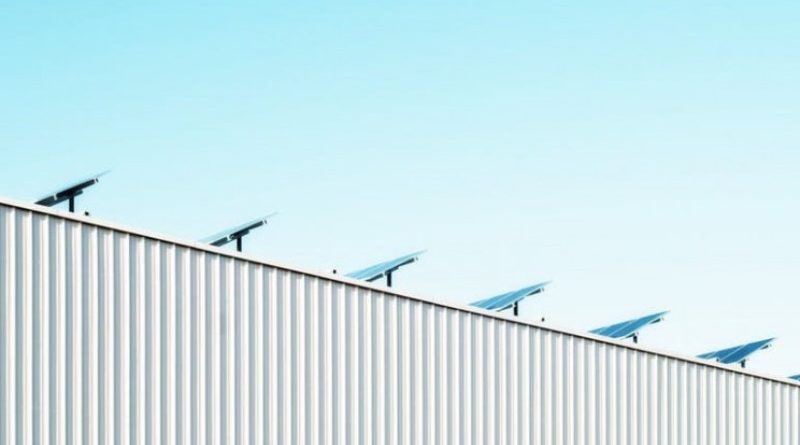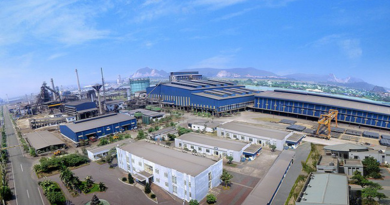Top 5 Global Green Building Trends of 2017
Thanks in part to the U.N.’s 2030 Agenda for Sustainable Development, green building projects are increasing worldwide. As a matter of fact, from 2015 to 2018 the percentage of global builders with at least 60 percent of their projects certified green will double, according to the World Green Building Trends report.
The main motivation behind green construction is to reduce carbon emissions. And the most successful ways to do that revolve around energy usage. Namely, to decrease energy consumption and increase energy efficiency in homes and buildings around the world.
Here’s how those goals break down into the top 5 global green building trends this year:
1. Solar Panels in All Shapes and Sizes
The worldwide acceptance of solar as the energy of the future is causing solar technology to get better and cheaper — fast.
- -In 2016, India set aside $3 billion of state funding to ensure their capacity for solar power reaches 100 Gigawatts by the year 2022.
- -On May 25, 2017, the UK made news when they generated nearly a quarter of their power needs from solar panels.
- -And right now, China is smack in the middle of creating the largest solar thermal farm in the world.
Huge, heavy panels with bulky grids are no longer the only options for a solar roof install.
In the U.S., Tesla has already rolled out its new solar shingles — every conscientious, rich American homeowner’s dream — while Forward Labs’ standing seam metal solar roofing — an option for the more frugal U.S. sector — is set to be released in 2018.
In Australia, Professor Paul Dastoor of the University of Newcastle is performing the final trials on lightweight solar panels made by printing electronic ink onto plastic sheets. These solar panels are cheap to produce and ship and could potentially be a game changer for the solar panel industry.
With this solar technology boom, it makes sense that the next big trend is…
2. Home Energy Storage
“Batteries capable of storing power at utility scale will be as widespread in 12 years as rooftop solar panels are now,” estimates Bloomberg New Energy Finance.
And that makes a lot of sense considering the same type of lithium-ion battery used to power an electric vehicle can also be used to store power in the home. This double demand enables manufacturers to increase battery production which drives down prices. And lower prices mean home batteries will be within reach of more people. It’s a win-win.
And some major players have already jumped in on the home battery manufacturing opportunity:
- Mercedes-Benz has produced suitcase-sized at-home energy storage for Germany since 2015, but it plans to expand internationally and has recently made the product available to California residents in the U.S.
- Powervault is the No. 1 at home battery manufacturer in the UK.
- ElectrIQ is one of the newest home energy storage manufacturers in the U.S. with a home battery that stores 10 kWh of energy.
Both the Mercedez and ElectrIQ batteries have options for apps to monitor their performance, which ties into the next green building trend:
3. Energy Management Systems
To get the most out of solar panels and batteries, energy management systems (EMSs) are often installed in green homes and businesses. EMSs monitor how much energy a building uses and can automate lighting, power and HVAC systems to ensure optimal energy savings.
For example, The Edge, a building in Amsterdam that won the BREEAM award for offices in 2016, has 30,000 sensors that connect to a smartphone app. This app collects data from office employees and adjusts temperature and lighting according to how many people are inside the building and even keeps track of individual employee’s air and lighting preferences.
Another example is Honda’s smart home in the U.S. which has an experimental home EMS that communicates with the electrical grid to create optimal energy performance.
And with all this technology to make a home “smart,” we can’t forget the wisest green construction process:
4. Passive Building Design
Passive building designs help minimize energy consumption by reducing the need for electrical lighting and temperature control in the first place.
How? By using advanced design techniques that allow for maximum amounts of natural daylight to come in, while restricting heat loss in the winter and reducing heat gain in the summer.
And one element of passive design that has a big impact in temperature control is what goes on the roof.
Green roofs play an important part in helping regulate the temperature inside and outside of many passive buildings and homes. The plants and soil systems put in place help insulate the building in the winter and shade it in the summer.
And the perfect complement to passive design is…
5. Sustainable Building Materials
Reclaimed wood and recycled materials are high on the list of sustainable building supplies. But there’s also a lot of innovation happening in the world of eco-friendly concrete.
Why is making concrete green so important?
Because it’s the world’s most used construction material and it’s responsible for producing copious amounts of CO2. There are several concrete alternatives out there such as AshCrete, Ferrock and HempCrete — but the most recent buzz is self-healing concrete.
This concrete is supplemented with bacteria that when exposed to moisture will become active and grow limestone that will fill any cracks that happen over time. This is a big deal since no added concrete is needed to maintain it.
Luckily for us, this worldwide trend of creating green building solutions will grow along with the burgeoning demand for better ways to sustain our planet.
Maybe soon the term “green building” won’t be needed because all building practices will be sustainable.
Source: Interesting Engineering







